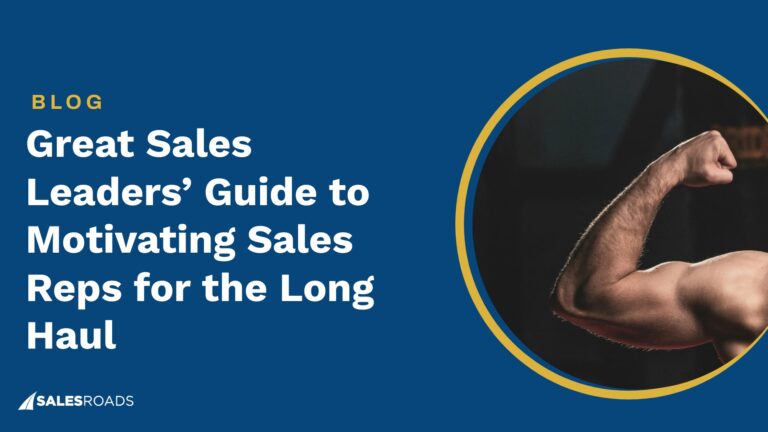One of the most important choices you can make is deciding how to structure your sales team. What if your team was made up of one person who did it all—prospecting, setting appointments, closing deals, and managing relationships? Sounds efficient, right?
But in reality, this approach can quickly stretch your sales rep too thin and leave important opportunities slipping through the cracks.
In this article, we’re diving into the account executive vs SDR debate, exploring why having both roles can drive your sales efforts to new heights.
What is an AE in Sales?
An Account Executive in sales is a professional responsible for closing deals and managing client relationships after initial prospecting has been completed by an SDR. Often referred to as the closer, an AE bridges the gap between a qualified lead and a satisfied customer by crafting tailored solutions and negotiating agreements that deliver value.
This role is pivotal for converting potential opportunities into revenue, making the SDR vs AE dynamic a critical aspect of a high-functioning sales organization.
Primary Responsibilities
An AE has a broad scope of responsibilities, requiring both strategic thinking and strong interpersonal skills. Their key tasks include:
- Conducting tailored product demonstrations: Account Executives play a critical role in educating potential customers about the product or service. They customize presentations to address the specific pain points, business goals, and operational nuances of each client, showing how the offering provides measurable value.
- Building and nurturing strong relationships: AEs act as the primary point of contact for prospects as they move through the sales process. By listening to client concerns and addressing them effectively, AEs build trust and foster long-term relationships that extend beyond the initial deal.
- Managing the sales pipeline effectively: AEs oversee every stage of their assigned opportunities, ensuring they progress through the funnel. This involves consistent follow-ups, coordinating with internal teams, and addressing bottlenecks to maintain momentum.
- Negotiating and finalizing contracts: Closing deals requires finesse. AEs negotiate terms, overcome objections, and ensure both parties find a win-win agreement. Their ability to close deals that meet client needs while aligning with company goals is essential to their role.
Key Performance Indicators
An AE’s performance is evaluated through specific, measurable metrics that provide insights into their ability to generate revenue and build strong client relationships.
Key KPIs for AEs include:
- Quota attainment and achievement rates: AEs are responsible for meeting or exceeding their sales targets, often measured as a percentage of quota achieved over a given timeframe. This metric directly ties their performance to the organization’s revenue goals.
- Deal size and average contract value (ACV): A high-performing AE not only closes deals but also secures high-value agreements. By focusing on larger deals or multi-year contracts, AEs contribute significantly to long-term revenue stability.
- Lead-to-customer conversion rates: This KPI tracks how effectively AEs turn qualified leads handed over by SDRs into paying customers. High conversion rates indicate strong persuasive skills and a clear understanding of client needs.
- Customer retention and upsell opportunities: Beyond closing the first deal, AEs are often measured by their ability to retain customers and identify opportunities for upselling or cross-selling additional services. A focus on retention demonstrates their capacity to deliver ongoing value.
Who is a Sales Development Representative?
A sales rep is a critical member of the sales team, specializing in lead generation and prospect qualification. Their primary focus is on the top of the sales funnel, where they identify potential customers, establish initial contact, and qualify leads to ensure they align with the company’s target audience.
The SDR vs AE dynamic revolves around distinct but complementary roles. While the SDR identifies and nurtures prospects, the AE takes over to close deals and manage relationships. Understanding this separation is essential to building a high-performing sales pipeline where each role is optimized for efficiency.
Primary Responsibilities
An SDR in sales plays a foundational role, ensuring a steady stream of qualified leads for AEs.
Their key responsibilities include:
- Prospecting and lead generation: SDRs actively seek out potential clients through various channels, including email outreach, social media engagement, and cold calling. Their efforts are aimed at identifying businesses or individuals who may benefit from the company’s offerings.
- Qualifying leads: The SDR’s role is to ensure that only high-quality leads are passed on to AEs. This involves gathering key information, understanding prospects’ pain points, and assessing whether they meet the company’s ideal customer profile (ICP).
- Engaging with prospects: SDRs initiate meaningful conversations with prospects, often acting as the first human point of contact. They build rapport, generate interest, and lay the groundwork for AEs to take over.
- Scheduling appointments: Once a lead is qualified, the SDR schedules meetings or demos for AEs to move the opportunity forward in the sales process. This transition is critical for maintaining momentum and ensuring seamless collaboration between the two roles.
Key Performance Indicators
The success of a rep is measured through specific metrics that reflect their ability to generate and qualify leads.
Important KPIs for SDRs include:
- Number of leads generated: A key indicator of productivity, this metric tracks how many prospects the SDR identifies and engages within a given period. High lead volumes are essential to fueling the sales pipeline.
- Lead qualification rate: This measures the percentage of leads that meet the company’s criteria for passing to AEs. A high qualification rate demonstrates the SDR’s ability to prioritize quality over quantity, ensuring that AEs focus on prospects with the highest likelihood of conversion.
- Outbound activities: The number of cold calls, emails, or social touches made daily or weekly is a measure of the SDR’s effort and consistency in reaching out to potential customers.
- Appointment setting rate: This KPI reflects the SDR’s ability to secure meetings or demos for AEs, highlighting their skill in engaging prospects and moving them to the next stage of the sales process.
- Pipeline contribution: A more holistic metric, pipeline contribution measures the total value of opportunities the SDR generates and qualifies for the sales team. It underscores their impact on overall revenue goals.
SDR vs Account Executive: Why Companies Need Both Roles
Before companies adopted the specialized roles of SDRs and AEs, it was common for one salesperson to handle every part of the sales process. While this approach might seem cost-efficient, it often led to inefficiencies, burnout, and subpar results. When an AE is tasked with both prospecting and closing deals, they are stretched too thin.
Prospecting requires consistent effort, high energy, and strategic outreach while closing deals demands focus, patience, and personalized engagement. Balancing these vastly different tasks can lead to missed opportunities and a decline in overall effectiveness.
Recognizing this, companies have implemented a division of responsibilities, assigning prospecting and lead generation to SDRs and deal-closing and client management to AEs.
Here’s why this approach works so well:
Specialization Enhances Focus
SDRs focus solely on building the top of the funnel, generating leads, and qualifying prospects. This allows them to dedicate all their energy to tasks like identifying potential customers, conducting outreach, and setting appointments. By having SDRs handle this critical stage, companies ensure a steady flow of high-quality leads into the pipeline.
AEs, on the other hand, focus on progressing these qualified leads through the funnel. They invest their time in understanding client needs, crafting tailored solutions, and closing deals. Without the distraction of prospecting, AEs can dedicate themselves fully to delivering exceptional customer experiences and achieving revenue goals.
Preventing Burnout
When one person is responsible for every stage of the sales process, they are constantly switching between tasks that require different skill sets. This multitasking leads to inefficiency and burnout, as the individual struggles to maintain productivity across conflicting priorities. By dividing the workload, SDRs and AEs can focus on what they do best, reducing stress and improving overall performance.
Seamless Handoffs Drive Success
Having both SDRs and AEs ensures a smooth transition between the prospecting and closing stages. Once an SDR has qualified a lead, they hand it off to the AE, who picks up the conversation with a deep understanding of the prospect’s needs and pain points. This seamless collaboration prevents leads from falling through the cracks and ensures that every opportunity is handled with care.
Greater Scalability and Efficiency
For growing companies, the SDR-AE model is a scalable strategy. SDRs can expand their prospecting efforts as the business grows, feeding more opportunities to AEs. This division of labor allows teams to handle higher volumes of leads and close more deals without sacrificing quality.
A Real Story from a Full-Cycle AE
Amanda Cyr was a full-cycle Director at AchieveIt before her company decided to outsource its sales team from SalesRoads, with the goal of having them set appointments for Amanda.
Here’s how she describes her experience:
“I simply didn’t have the bandwidth to devote as much time as I wanted to prospecting. It was pretty frustrating not having the time to prospect, and I felt the pressure of both time and pipeline.
Today, I can spend a lot more time fully focusing on my pipeline and my clients, taking as many meetings as I can during the week. I no longer have this nagging voice in the back of my mind telling me, ‘You have to do this; you need to make time for this.'”
You can watch the full interview here:
Collaboration Between AEs and SDRs
The relationship between AEs and SDRs is a cornerstone of successful sales organizations. While the two roles are distinct, their collaboration is what ensures a seamless and effective sales process.
This is how they work together:
- Shared Goals: Both SDRs and AEs are aligned in their ultimate objective—driving revenue. While SDRs focus on generating qualified leads, AEs aim to convert those leads into paying customers. This shared mission fosters collaboration and teamwork.
- Seamless Handoffs: A smooth transition of leads from SDRs to AEs is critical. When SDRs provide detailed information about a lead’s pain points, needs, and buying intent, AEs can hit the ground running with tailored conversations that address specific concerns.
- Feedback Loops: Constant communication between SDRs and AEs strengthens the partnership. AEs can provide feedback on lead quality, helping SDRs refine their outreach efforts, while SDRs can share insights from their initial conversations to inform AE strategies.
Bottom Line
The SDR vs AE relationship isn’t about competition—it’s about synergy. By understanding the unique strengths of each role and fostering strong collaboration, companies can create a sales machine that consistently drives results.
Whether it’s transitioning SDRs to AEs or ensuring both roles work together seamlessly, this approach is key to achieving long-term success in sales.











